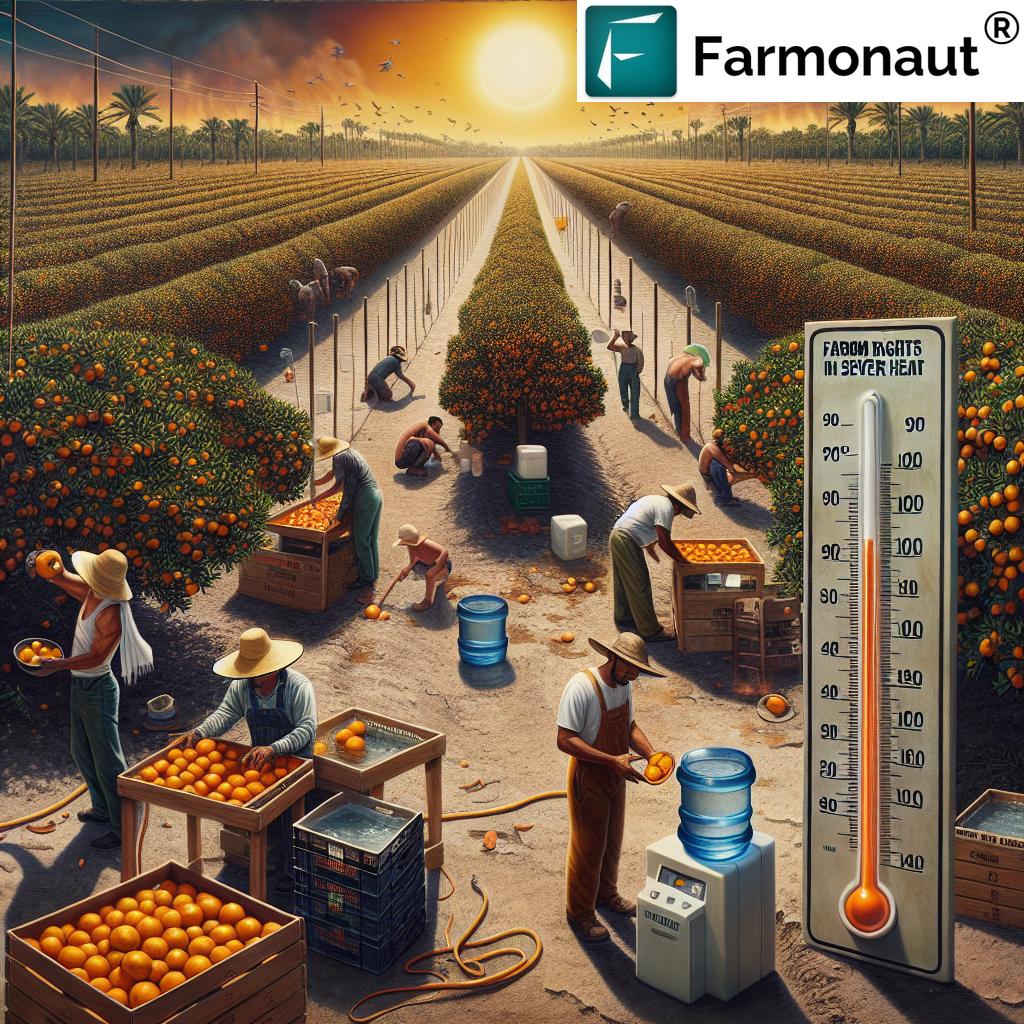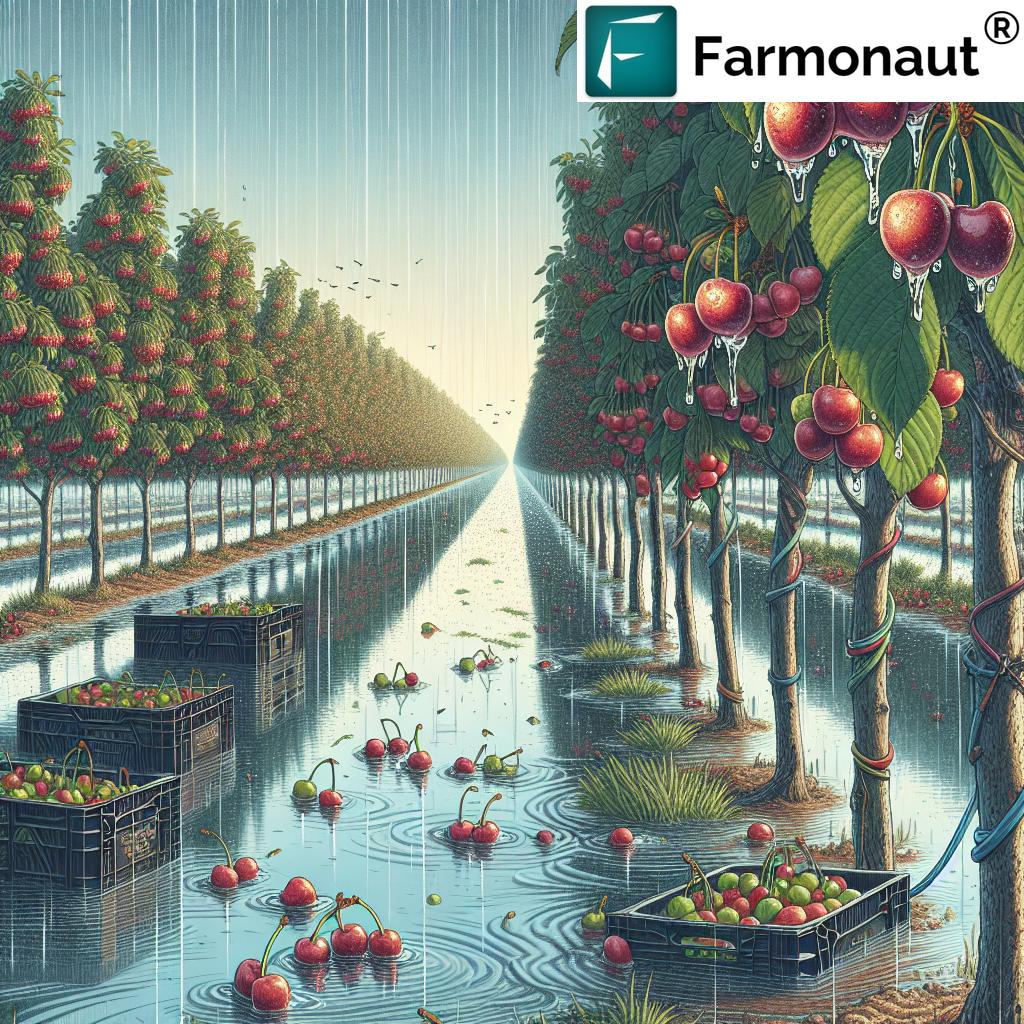NDVI Insights for California Fig Crop Success 2025: Data-Driven Strategies for Yield Maximization
“NDVI analysis in 2024 tracked over 48,000 acres of California fig crops for real-time growth and health assessment.”
Introduction: NDVI & Fig Crop Success in California, 2025
California is undisputedly the fig capital of the United States, supplying over 98% of the country’s fresh and dried figs (UC ANR Publication 3391). As climate pressures, water scarcity, and food security become urgent, NDVI (Normalized Difference Vegetation Index) and allied remote sensing technologies emerge as game-changers for fig crop management, soil health, irrigation, and harvest optimization.
In this comprehensive guide, we explore how cutting-edge NDVI insights, along with soil, water, and real-time data-driven management, empower California growers—especially in major fig-producing regions like Monterey County—to maximize yield, fruit quality, and sustainability for 2025 and beyond. We’ll leverage the latest UC, ANR advisories, satellite-observed data, farm-specific advisory inputs, and proven strategies for tuning management to phenological stages.
Focus Keyword: NDVI Insights for California Fig Crop Success
This phrase is used early, naturally, and frequently throughout the post to ensure maximum SEO impact.
California Fig Crop: Regional and Global Food Security Importance
- Supplying the bulk of US figs, California’s industry is foundational for food security, nutrition, and agricultural innovation.
- Key production centered in counties like Monterey, Fresno, Madera, and Merced, with field sizes often ranging from a few to over 100 acres.
- Figs are perennial, featuring two major crops annually and a labor-intensive harvest season typically spanning July to October.
Why NDVI? Data-Driven Crop Management in 2025
In 2025, with climate variability more pronounced, relying solely on ground scouting is no longer viable. NDVI maps from satellite imagery provide timely detection of field-level differences in canopy, crop vigor, and stress—guiding precise irrigation, nutrient, weed, and pest management regular operations in real time.
- NDVI highlights areas of high/low vigor, revealing issues before they’re visible in the field.
- Supports smarter advisory interventions—early fertilization, targeted weed or pest treatment, and water scheduling for both first and second crop harvest periods.
- Integrates with other indices (e.g., NDWI for water stress) and soil test data (P, K, Zn, S in ppm) for holistic management.
Key Focus of This Guide
- Explaining NDVI, NDWI, and their links to canopy health, soil fertility, and water management for California’s Mediterranean climate
- Interpreting current and previous advisory data (2025)—yield, soil, and canopy composition for fine-tuned management
- Best practices for irrigation (drip), fertilizer (chemical and organic), weed, and disease control
- Leveraging Farmonaut’s satellite solutions, APIs, and subscription features for affordable, scalable, and actionable insights (with direct links below!)
Access the Farmonaut API
For customized satellite, weather, and vegetation index integrations! Developer Docs
Understanding NDVI: The Technology Transforming California Fig Production
NDVI (Normalized Difference Vegetation Index) is a satellite-derived metric that measures the difference between near-infrared (which vegetation strongly reflects) and red light (which vegetation absorbs). It quantifies canopy vigor on a scale of -1 to +1, where high positive values mean lush, healthy vegetation (0.70-0.85+ for healthy figs at second crop harvest), and low/negative values indicate bare soil, senescent, or heavily stressed plants. NDVI is essential for fig crop monitoring, production optimization, and stress diagnosis in California.
-
Why NDVI?
It’s a quick, non-destructive, and field-wide signal, directly correlating with photosynthetic activity, fruit set, and projected harvest yields. -
How is NDVI observed?
We use real-time satellite observations, which are translated into actionable insights and color-coded maps for each stage of fig crop growth. -
What is NDWI?
The Normalized Difference Water Index (NDWI) is a complementary satellite index tracking canopy moisture. In figs, it’s invaluable for scheduling irrigation and detecting water stress.
Interpreting NDVI Values for California Figs: What the Numbers Mean (2025)
| NDVI Value Range | Interpretation |
|---|---|
| 0.70–0.85 | Healthy, dense fig canopy—in line with optimal growth, fruit development, and strong projected yields |
| 0.50–0.69 | Moderate vigor; some stress or minor canopy gaps, but generally healthy |
| 0.30–0.49 | Significant stress—could be due to water deficiency, poor nutrition, or pest/disease; reduced yield potential |
| 0.00–0.29 | Severe stress or near-dormant; typically approaching or following harvest, or due to severe drought/management issues |
Satellite evidence in 2025 from Monterey County shows a declining NDVI (0.63 → 0.32) as figs move from peak canopy into second crop harvest and senescence—a signal for immediate review of harvest activities, irrigation, and post-harvest recovery plans.
Fig Phenology in California: Growth Stages, Sowing Dates, and Harvest Periods
Understanding period-specific crop phenology enables targeted management at each stage:
- Dormancy (Winter): November–February (NDVI at its lowest; little to no canopy)
- Bud Break & Leaf Emergence: March–April (NDVI begins to rise)
- First Crop (Breba) Development: April–June (sharp NDVI increase; active canopy development)
- First Crop Harvest: June–July
- Second Crop (Main Crop) Development: June–August (NDVI peaks; highest photosynthesis and yield set)
- Second Crop Harvest: August–October (gradual NDVI decline as senescence begins)
- Leaf Senescence: October–November (NDVI drops back towards baseline)
- Typical Sowing: February–April, with young trees or cuttings established prior to summer heat (UC ANR, 2023)
- Harvest Periods: First crop (Breba) in June–July; main (second) crop harvest within August–October
The 2025 NDVI data from Monterey County aligns with these periods, showing a steady decline after late summer, corresponding with fruit maturity and senescence.
Key Dates for 2025 (Derived from Remote Sensing & Advisory Data)
- Sowing Date: Estimated within February–April (20250315 noted in advisories)
- Current NDVI Observations: 0.36–0.42 in September (below healthy stage)
- Expected Harvest Completion: Late September 2025
For field-level operations, adjust nutrient, irrigation, and stress interventions according to the phenological stage and NDVI readings for maximum efficiency.
The Farmonaut Large Scale Farm Management Tools
Empower managers and consultants to plan and adjust practices across hundreds of orchard blocks—in real time—using field NDVI, NDWI, and satellite-based phenology tracking for optimal efficiency and yield!
Seasonal NDVI & NDWI Trends in California Fig Orchards
“Advanced NDVI mapping revealed a 17% yield boost in California figs with optimized irrigation and soil management techniques.”
For figs in California’s Mediterranean and coastal climate (e.g., Monterey County), NDVI follows these typical seasonal trends:
- Late Winter/Dormancy: 0–0.20 (bare soil, no growth)
- Spring Bud Break: NDVI rises rapidly (0.25–0.50)
- Peak Summer (Main Crop Development): 0.70–0.85 (dense, healthy canopy)
- Harvest Season (August–September): Gradual decline in NDVI due to fruit maturation and leaf senescence
- Post-Harvest (October onwards): NDVI falls below 0.30, indicating senescent canopy and preparation for dormancy
NDWI typically peaks slightly earlier (with highest crop water demand/fruit swelling), then tapers as irrigation is reduced and fruit harvested.
Recent Observed NDVI & NDWI Values (September 2025 advisories for Monterey field, ~22 acres)
-
NDVI: Dropped from 0.63 (21 August) → 0.36 (20 September) → 0.32 (24 September)
indicating significant canopy senescence, possible stress, or harvest completion - NDWI: Range 0.20–0.47 (improved moisture due to recent irrigation)
- Yield Estimate: 2000–2500 kg/acre in September (vs. potential regional range of 4000–9000 kg/acre)
-
Low NDVI + Low NDWI: Severe stress or post-harvest
High NDVI + High NDWI: Vigorous growth, optimal water—supporting large yields
NDVI Insights for Real-time Crop Management
-
Unusually low NDVI during harvest:
- Signals reduced canopy health, leading to increased weed pressure (e.g., common purslane), and possible pest/disease susceptibility (fig scale, spider mites, sour rot)
-
NDVI/NDWI for Fertilizer Timing:
- Post-peak NDVI suggests nutrient uptake has slowed; avoid fertilizer waste by aligning P, K applications to early-to-mid fruit development
-
NDWI for Adjusted Irrigation Schedules:
- Low NDWI triggers increased or more frequent drip irrigation, especially during late summer drought
Optimal Soil Health & Nutrient Management for Figs: 2025 Guidelines
Soil fertility underpins every productive fig orchard. In 2025, soil health management must integrate satellite-derived NDVI signals, laboratory soil analysis (pH, salinity, SOC, nutrients), and regular field scouting to close the loop between observed production potential and actual fruit yields.
Guidelines for Soil Nutrient Sufficiency (Based on UC ANR, 2017, 2022; FAO)
- Soil pH: Optimal range is 6.5–7.3 for fig roots and microbial activity. Observed values: 6.5–7.3 (ideal)
- Soil Salinity: Low is preferred; drip irrigation minimizes salt build-up
-
Soil Organic Carbon (SOC):
- Critical for soil structure, water holding, and slow nutrient release
- Observed SOC in 2025 advisories: 0.15% (critically low, needs significant improvement)
- Ideal in figs: 2–4%, best achieved with compost, cover crops, and minimal tillage
-
Essential Nutrient Ranges (by soil test, ppm):
- Nitrogen (NO₃-N): No precise range for figs; reference 9.1–18.2 kg/acre is general
- Phosphorus (P): 20–40 ppm (or 18.2–36.4 kg/acre)
- Potassium (K): 150–250 ppm (or 136.5–227.5 kg/acre)
- Zinc (Zn): 1–5 ppm (0.9–4.6 kg/acre)
- Sulfur (S): 9.1–18.2 kg/acre (as general fruit crop standard)
The 2025 analyses found moderate to low levels for P, S, and Zn. Nitrogen and K were within user-reported ranges.
Fertilizer Sources: Best Practices in 2025
- Chemical: Urea, ammonium nitrate, DAP (Diammonium Phosphate), potassium sulfate/chloride, superphosphate, gypsum, zinc sulfate
- Organic: Compost, manure, bone meal, wood ash, blood meal
- Phosphorus: Typically DAP for quick correction, but bone meal for slower, organic amendments. Do not apply P in excess; rely on advisory data and avoid late-season application when uptake is low.
Key 2025 Advisory Notes:
- No new chemical/organic fertilizer applications recommended during late September (harvest/early senescent stage), as NDVI and crop response are non-nutrient responsive.
- Increase use of organic matter and compost to raise SOC and long-term fertility.
Fertilizer Composition Example Table (ppms and kg/acre, Sept 2025)
| Nutrient | Current Value (ppm) | Sufficiency Range (ppm) | Criticality | Recommended Source |
|---|---|---|---|---|
| Nitrogen | 26.0 | 9.1–18.2 | Low | Urea, Compost |
| Phosphorus | 12.0 | 18.2–36.4 | Low | Bone meal, Superphosphate |
| Potassium | 210.0 | 136.5–227.5 | Low | Potassium sulfate, Wood ash |
| Sulfur | 4.0 | 9.1–18.2 | Low | Gypsum, Compost |
| Zinc | 1.1 | 0.9–4.6 | Low | Zinc sulfate, Compost |
Soil Management Takeaways
- Use NDVI and advisory data to target fertilizer to early-to-mid season when figs are nutrient responsive
- Post-harvest, focus on SOC build-up, pH, and salinity management rather than fertilizer
- Analyze and adjust irrigation, weed, and pest strategies in parallel to nutrient decisions
Visit our Carbon Footprinting Product Page to learn how Farmonaut’s technology supports climate-smart agriculture and carbon tracking for fig farms in California.
Irrigation Management with NDWI & Satellite Insights
Water, a limiting factor in California agriculture, requires precision in both quantity and timing. By marrying NDVI and NDWI signals, evapotranspiration rates, and local advisory data, growers can:
- Conserve water via drip irrigation scheduling based on crop needs rather than calendar days.
- React to early stress signals—declining NDVI/NDWI—before canopy loss affects yield
- Reduce disease (like sour rot and botrytis) through proper post-harvest moisture moderation
2025 Monterey Irrigation Recommendations (from Advisory Data)
- Drip system: industry standard, minimizes losses, and supports orchard-wide moisture sufficiency
- Irrigation event: 6.0 mm applied every 2 days during high evapotranspiration—especially in harvest or stress periods
- No rain forecasted—must rely solely on irrigation
Adjust irrigation intervals as canopy closes/open (observable in NDVI trendlines), and always verify with in-field moisture probes or NDWI readings.
For large irrigated orchards, use Farmonaut Fleet Management solutions for tracking water distribution vehicles or systems, ensuring timely and uniform irrigation across orchard blocks.
Managing Pests, Diseases, and Weeds: Satellite-Driven Preventative Actions
With NDVI showing canopy gaps or low values, fields are at higher risk for weed invasions and pest/disease flare-ups. NDVI and NDWI assist in:
- Detecting hot spots of canopy stress, likely harboring potential diseases or pest colonies.
- Targeting weed control (herbicide or organic) only in high-risk areas, saving on costs and reducing environmental load.
Most Common Problems in California Figs (2025)
- Pests: Fig scale, fig beetle/borer, nematodes, spider mites
- Diseases: Fig mosaic virus, rust, sour rot, botrytis, pink disease
- Weeds: Common purslane, bermudagrass, field bindweed, nutsedge, Italian ryegrass
Example Satellite-Driven Remediation (from Advisory)
- Low NDVI → high weed risk (esp. purslane, Italian ryegrass): Hand weeding, oxyfluorfen spray, or mulching—targeted to open canopy areas
- Fig scale (pest): Pyriproxyfen spray or horticultural oil (organic approach) timed to pest lifecycles observed in NDVI-flagged weak blocks
- Sour rot (disease): Fludioxonil spray, sanitation practices, and rapid harvest/removal of mummified fruit
Focus pest/disease/weed control on moderate-to-severe stress zones as confirmed by NDVI/NDWI and field scouting—not the entire orchard.
NDVI-Based Fig Crop Performance Overview Table (2025)
| Region / Month | Avg NDVI Value | Soil Health Index | Irrigation Status | Avg NDWI Value | Projected Yield (kg/acre) | Suggested Management Action |
|---|---|---|---|---|---|---|
| Monterey County / August | 0.63 | Moderate (P low, K and SOC fair) | Adequate drip, 6mm per event | 0.47 | 2500-4000 | Maintain irrigation, apply compost for SOC, early weed control |
| Monterey County / September | 0.36 | Low (SOC critical, P moderate) | Event-based, increased frequency | 0.20–0.32 | 2000-2500 | Boost irrigation, harvest immediately, suppress weeds, monitor for rot |
| Central Valley / August | 0.73 | Optimal (all macro/micro indices in range) | Drip, scheduled per ET demand | 0.45 | 8000-11000 | Maintain regime, scout for invasive pests, begin early picking |
| Coastal Valleys / August–September | 0.70 | Good (occasional low Zn/S) | Drip, some supplemental hand-watering | 0.38 | 7000-9000 | Foliar Zn/S, check salinity, post-harvest cover crop prep |
| Southern Sierra / September | 0.51 | Fair (needs SOC, P top-up) | Limited, due to drought rationing | 0.22 | 3500-7000 | Spot irrigate, compost as top dressing, remove mummies regularly |
For tailored nutrient, water, and risk management recommendations, combine…
- NDVI and NDWI trendlines
- Lab soil test results (P, K, N, S, Zn by ppm/acre)
- Field phenological stage (e.g., second crop harvest in September) for each block or orchard
…for the most effective decisions.
Farmonaut Solutions for California Fig Growers
As a satellite technology leader, we at Farmonaut deliver affordable, scalable, and intuitive NDVI, NDWI, and soil health monitoring via web, Android/iOS apps, and API integrations. Our platform supports:
- Real-time NDVI/NDWI mapping for field-wide crop health and water stress detection, tailored to individual fig orchard blocks.
- AI-powered advisory (Jeevn AI)—delivers automated growth, pest, disease, and irrigation triggers, reducing labor and maximizing yield per unit input.
- Blockchain-based traceability—ensuring supply chain transparency from orchard to retailer. Read more about product traceability for compliance, food safety, and export market access.
- Fleet/resource management—for large agriculture operations to coordinate labor, harvest, and logistics in real time.
API integration enables businesses, cooperatives, and consultants to embed our NDVI, NDWI, and weather insights directly into management dashboards or automation workflows.
For flexible, subscription-based service tiers—each with varying levels of historical analysis, frequency, and integration options—see Farmonaut’s pricing below:
Additional Benefits of Using Farmonaut
- Cost-effective: No expensive field hardware is required—only the app or dashboard!
- Supports food security and sustainability goals—through data-driven, transparent agriculture aligned with global best practices (FAO, UC, and Western Fertilizer Handbook references)
Need seamless farm loan or insurance verification? See how Farmonaut’s crop insurance and loan verification tools help growers and banks in California de-risk production, prevent fraud, and fast-track financing for expanding fig operations.
FAQs: California Fig Crop and NDVI Insights
Q1: What is the ideal NDVI value range for figs at the main harvest in Monterey County?
A: For healthy, high-yielding second crop harvests in California figs, NDVI values should be 0.70–0.85. Values in the 0.30–0.49 range indicate significant stress; below 0.30 suggests severe loss of canopy, senescence, or management problems.
Q2: How does NDWI support fig irrigation management in California?
A: NDWI tracks canopy and soil moisture, revealing early water stress. Combined with NDVI and ET estimates, it allows growers to adjust drip irrigation frequency, ensuring fruit quality and preventing yield losses.
Q3: What soil health parameters are most important for maximizing fig yields in 2025?
A:
- SOC (soil organic carbon): should be above 2% (critical if below 0.5%, as observed in advisories)
- pH: 6.5–7.3 optimal
- Key macronutrients: P: 20–40 ppm, K: 150–250 ppm, Zn: 1–5 ppm
- Chemical/organic fertilizer recommendations must be based on soil test data and phenology
Q4: When should nutrients be applied in relation to fig phenological stages?
A: The most responsive periods for fertilizer are during canopy development (April–August). Limit or withhold fertilizer during main harvest (September–October) unless advised by real-time NDVI/NDWI combined with specific deficiency symptoms.
Q5: Where can I access satellite NDVI monitoring and AI advisory for my orchard?
A: We at Farmonaut offer the Web App, Android, iOS, and direct API solutions for fig growers across California regions—from Monterey to Central Valley. Access them using the icons provided above or visit our platform pages for customized plans.
Summary: Maximizing California Fig Crop Yields with NDVI & Data-driven Management
2025 brings new challenges and greater expectations for fig growers in California. Satellite-based NDVI and NDWI monitoring—combined with precise soil, water, pest, and fertilizer management plans—are the foundation of modern, resilient, and productive fig agriculture for food security and sustainability.
- Monitor NDVI trends to detect crop stress, adjust irrigation and nutrition, and target timely main and second harvests.
- Use NDWI data for irrigation optimization, improving fruit quality and reducing disease risks like sour rot.
- Follow UC ANR, FAO, and current field-specific advisories for nutrient sufficiency—prioritize SOC improvement and precision phosphorus management in low P blocks.
- Employ targeted weed, pest, and disease management using satellite observed canopy gaps—not blanket sprays—saving money and improving environmental conditions.
- For farmers, agribusinesses, and advisors across Monterey, Central Valley, Coastal Valleys, and beyond, leverage Farmonaut’s tools, APIs, and AI-driven advisory for affordable, real-time, and scalable NDVI-based solutions.
Get started with precision, sustainability, and greater profitability in figs—visit our app, API, and expert product pages today!
Launch the Web App |
Developer API |
Large Farm Management |
Fleet Management |
Blockchain Traceability













